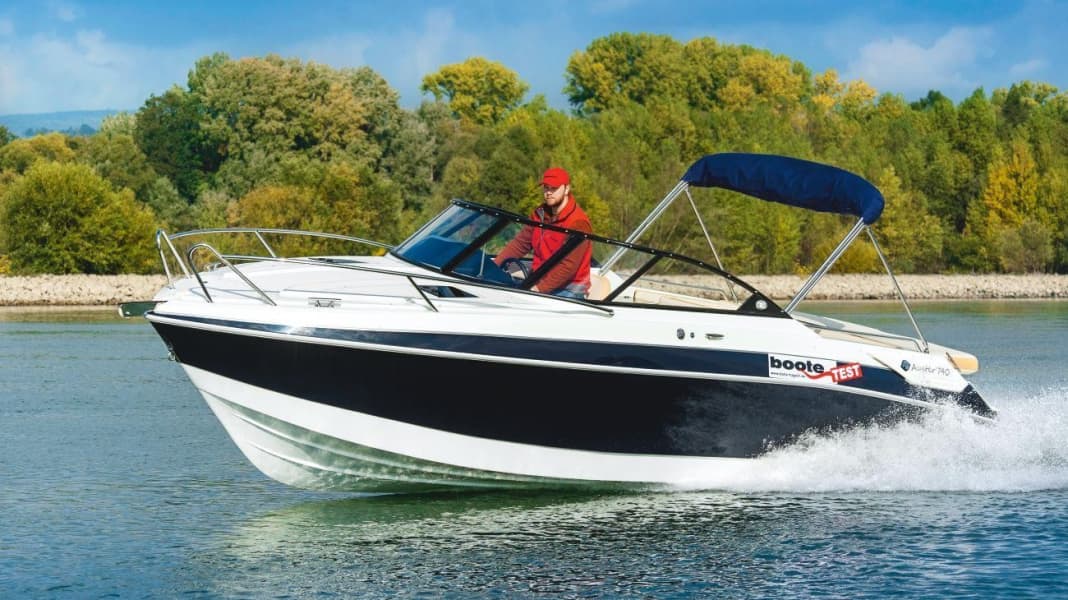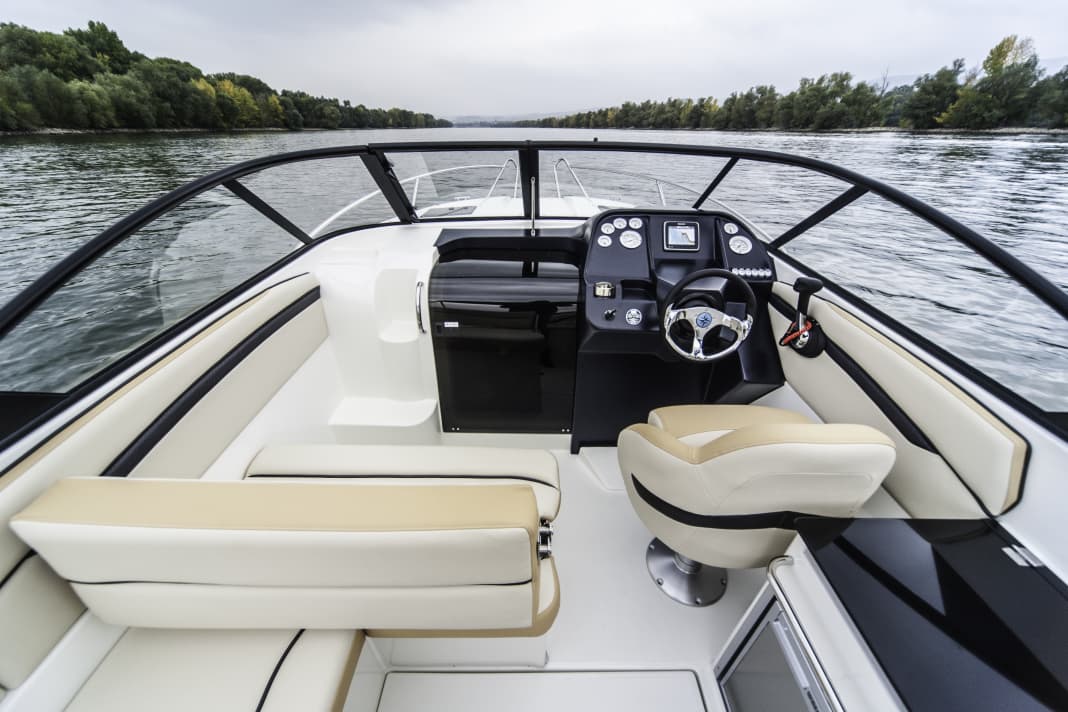
Europe Marine has already worked with theOwn brand Viper has shown that it recognises the wishes of water sports enthusiasts and knows what the market offers and what is missing. With the new Auster 740, the German shipyard has broadened its range and now offers a boat designed for families in the weekender segment. With theStarting price of € 39 800the 740 is deliberately aimed at water sports enthusiasts who are new to the sport.
With a length of 7.42 metres, the OysterSufficient space for up tocrew of sixwhich is also the maximum permitted according to CE.
The shipyard has equipped the cockpit with a U-shaped seating area, stern sunbed and wet bar. The latter only has a spirit cooker and 40-litre refrigerator for an extra charge.
Below deck there is a V-shaped bench seat that can beDouble berth can be extended. The shipyard has also provided space in the cabin for a chemical toilet, which is part of the standard equipment.






Although a trailer is not a standard feature, the Auster 740 with its1850 kg (standard boat with 3.0-litre engine) can still be easily transported overland with SUVs in the medium weight class (2500 kg trailer load).
When it comes to engines and propulsion, the German shipyard relies entirely on US-made inboards and sterndrives. The power range on offer for the Auster 740 starts with the 3.0-litre petrol engine with 135 hp. This is followed by two V6 engines with 220 hp or 250 hp and the new 6.2-litre spark-ignition engine with a whopping 300 hp.
Our test boat is equipped with Mercury's 4.5 l - 250 (V6 with 250 hp) with catalytic converters and Lake Constance approval. It gives the Auster 740 a top speed of just under 41 knots. At this speed, the 200 litre fuel tank is empty down to the 15% reserve after 87 nm (161 km) or just over two hours of non-stop sailing.
If the rev counter indicates 3000 rpm, the Oyster is in the economic range.
The landscape flies past you on still waters at exactly 22 knots. The range is 147 nm, which corresponds to around 273 km and is a good result for a weekender of this length. For those who want to know exactly: The converted figure is 0.62 l/km.
A lower consumption per kilometre cannot be achieved even at creep speed (4 knots). Here, the fuel flow in the engine is 0.69 l/sm with an increasing tendency up to gliding speed. Also increasing, but without falling in the gliding range, is the noise development that we measured at the driving position. It rises from an initial 65 db/A at 3 kn or 600 rpm of the engine to 82 db/A in economic planing speed (3000 rpm) and with this value is slightly above the BOOTE comfort limit of 80 db/A.
It gets louder at top speed. Here, the measuring device shows a value of 91 db/A. Now that we have clarified what the Auster 740 consumes with the test engine, how fast it is and how loud or quiet it is on board, let's move on to the manoeuvrability and driving characteristics.
The full circles when travelling forwards, with the engine idling, measure 1 1/2 boat lengths in diameter on both starboard and port sides. When travelling astern, the turning circles are only one boat length to either side. Coupled with a reversing behaviour in reverse from starboard to port in just under 3 seconds and from port to starboard in 4 seconds, the Auster 740 is easy to manoeuvre.
Accordingly, you should not have any problems when turning or mooring in smaller harbours or bays. The tester described the driving behaviour at top speed as "unproblematic and good-natured".
In detail, this means that the 740 is light on its feet on the slalom course and follows the helmsman's commands without delay. As the circles get tighter and tighter, the hull brakes under normal lateral forces. There is no tilting or hooking of the hull as long as the drive is trimmed completely to the transom, as it should be.
The skipper ends the "gyroscope ride" by opening the steering, whereupon the oyster picks up speed again.
For the rough water test, the stern waves of other sports boats and inland waterway vessels were used. Here, the Auster proved to be superior, gliding smoothly and easily over the waves and the hull deflected the spray well.
As the day draws to a close, the V-shaped seating area below deck needs to be converted into a double berth. The cushions are nice and firm so that you don't lie through them. If that's not enough sleeping space for you, you can set up emergency berths in the cockpit. To do this, you should order the convertible top with side and rear canopy sections, which is available at extra cost.
There is plenty of stowage space on board the Auster, both below deck and in the cockpit. The workmanship of the Auster 740 is neat even in the hard-to-reach areas. The GRP has an almost complete protective coating.
All surfaces are clean and well finished. However, the tester was not really happy with the engine compartment lid. It is very large, which benefits the serviceability of the engine, but seems to be weak between the backrest and the seat. The 740 really shines in terms of safety with its fire extinguishing system, manual fire extinguisher and electric and manual bilge pump.
Our conclusion
The Auster 740 is a suitable addition to the Viper models from the Europe Marine shipyard. With the exception of the unstable-looking engine cover, there is nothing to criticise in terms of workmanship or installation. The manoeuvring and sailing characteristics are good-natured and easy to control. All in all, the Auster 740 is an affordable gem of German boatbuilding.
Data sheet: Auster 740
Shipyard: Europe Marine GmbH
Type designation: Oyster 740
CE category: C - Coastal waters
Material of hull and deck: Plastic
Length: 7,42 m
Width: 2,50 m
Displacement: 1,85 t
Price: 39.800,00 €

